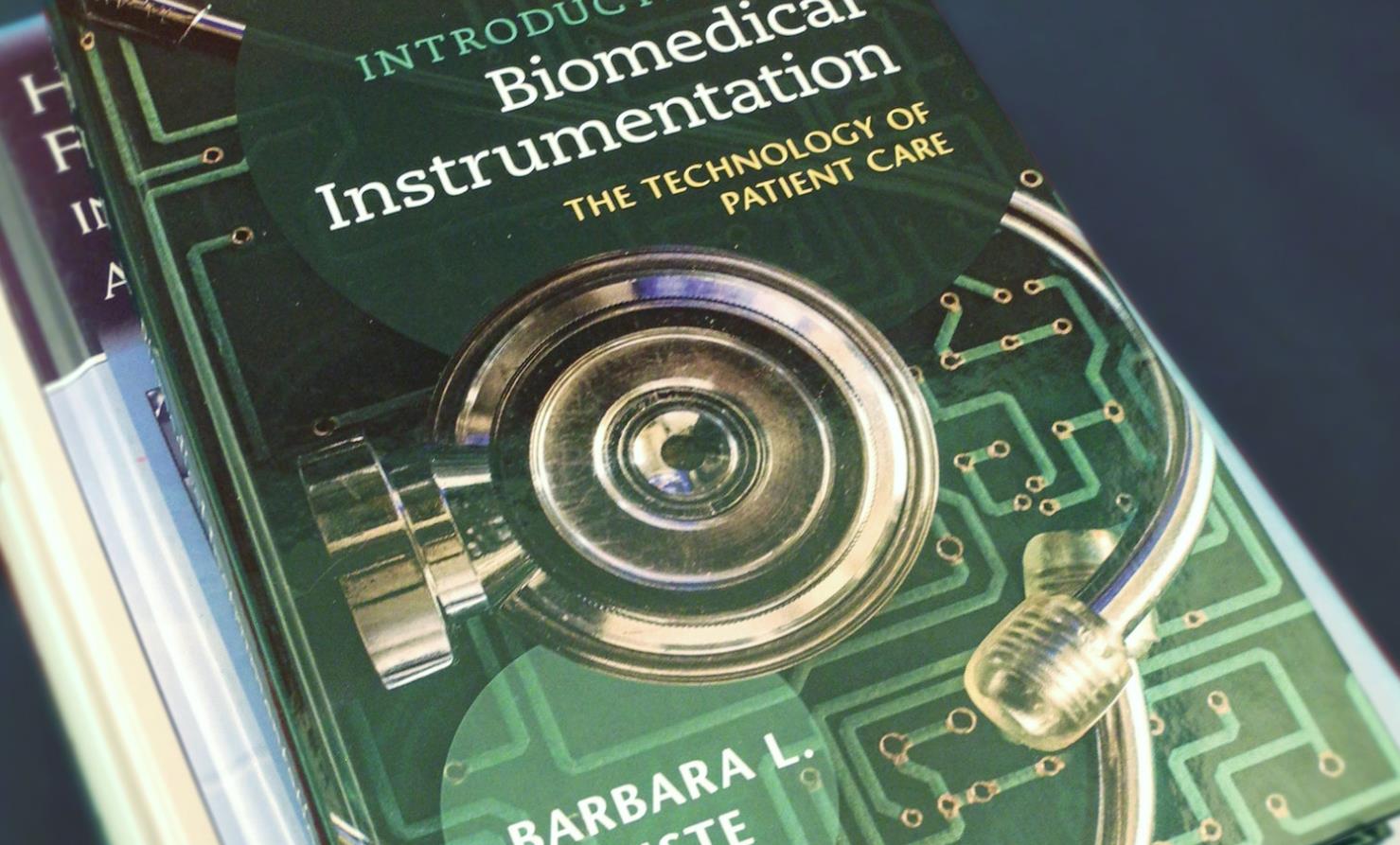
The second edition of Barbara Christe’s Introduction to Biomedical Instrumentation: The Technology of Patient Care has just been published (Cambridge University Press, 2018). It’s a small book (236 pages in the 6-inch by 9-inch hardbound format) and it appears to have been written for students just beginning their training as biomedical equipment technicians, the front-line, hands-on professionals who inspect, maintain, and repair medical equipment in the patient care environment.
In support of the book’s educational purpose, each chapter starts with a statement of “Learning Objectives” and ends with a set of “Study Questions” and a list of activities “For Further Exploration.” These activities encourage readers to seek out reference materials, especially those available online, but the book does not include a list of references or a bibliography. There are numerous monochrome photographs and diagrams that supplement the text.
The first chapter introduces the profession of Healthcare Technology Management (HTM). This umbrella term, which is gaining general acceptance, covers individual professionals like clinical engineers and biomedical equipment technicians (BMETs). The book is clearly oriented toward those in the latter group, which Christe refers to as HTM Technicians. The chapter provides a useful overview for students unfamiliar with the profession.
Chapter 2, Patient Safety, covers several topics but with limited detail. There is a discussion of “risk,” but it does not include the basic principle that risk is a combination of probability and consequence, an essential concept for sound thinking about risk management and patient safety. And, although the book devotes significant space to “macroshock” (electrical shock from large currents, an exceedingly rare occurrence in healthcare facilities) its treatment of “microshock” does little to help readers understand why these small current levels can be especially harmful to certain types of patients.
In the third chapter, a discussion of codes and standards, Christe makes the surprising statement that “outlets in a hospital are usually wired with the ground pin at the ‘top’ of the outlet” and that this is “an NFPA requirement (NFPA 99 6.3.2.2.1.1).” In my experience, electrical receptacles are variously oriented up, down, left, or right based on the installer’s preference. Christe’s NFPA 99 citation says nothing about orientation of receptacles and I’m not aware of any code or standard that does.
Chapter 4 addresses medical device testing, especially electrical safety testing. There appears to be an error in Figure 4.3, which shows an ammeter connected directly from “hot” to “ground” of an electrical receptacle. Don’t try this at home (or in the hospital)! Also, the text fails to note that NFPA 99 (2012) no longer requires routine electrical safety testing, an activity that historically constituted a large portion of BMET work.
Chapter 5, In the Workplace, is a useful overview on codes of ethics, universal precautions for infection control, and customer service.
The remaining chapters cover anatomy and physiology of various body systems (The Heart; Blood Pressure; Respiration and Respiratory Therapy; The Brain and its Activity), the operation of selected hospital departments (The Intensive Care Unit; The Operating Room; Imaging; Electronic Medical Record and IT), and the associated technology (Electrodes, Sensors, Signals, and Noise; Cardiac Assist Devices; Clinical Laboratory Equipment; Intravenous Pumps and Other Pumps; Miscellaneous Devices and Topics).
Although the book covers many subjects, others are left out; for example, troubleshooting and identification of typical failure modes, essential skills for equipment repair. However, the shortcomings of the book are less about breadth and more about depth. I am reminded of the old saying about the Platte River as it flows languidly across Nebraska: A mile wide and an inch deep, too thin to plow and too thick to drink. Seven brief pages on IT, including electronic medical records but excluding cybersecurity, is too thin.
This book will, of course, be supplemented by other materials that address each topic in greater detail. So, I asked myself, why read this book instead of going directly to those materials? My answer is that it’s a good catalog of topics to help orient incoming BMET students, a jumping off point for further study. But for practicing BMETs, the book is less valuable, especially in the absence of a bibliography and a list of references that working professionals can turn to.
